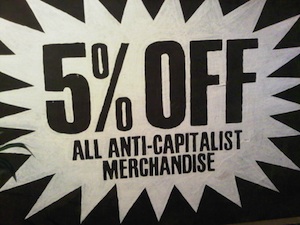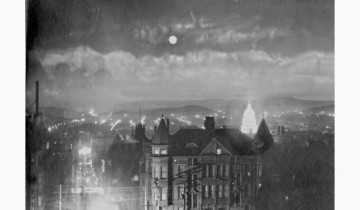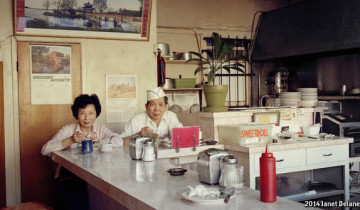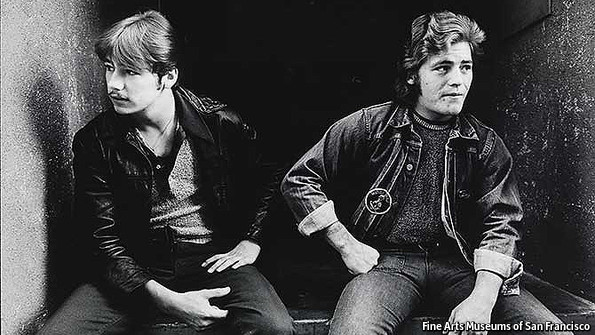 In London, you can take classes on how to make graffiti. On weekends, street artist Andy Seize gives graffiti lessons to children and adults who pay between £35 and £150 per session. Since he works in pre-approved spaces, Seize doesn’t have to worry about London’s active graffiti clean-up crews.
In London, you can take classes on how to make graffiti. On weekends, street artist Andy Seize gives graffiti lessons to children and adults who pay between £35 and £150 per session. Since he works in pre-approved spaces, Seize doesn’t have to worry about London’s active graffiti clean-up crews.
“[Graffiti] will always have people who prefer to paint trains, tubes, buses and motorway’s illegally,” says Seize, a self-taught graffiti artist who got his start when he was 15. “You can call it vandalism, but some people regard it as leaving their tag or image for all to see. Graffiti is freedom.” Seize did not seem to find anything counterintuitive in teaching paying customers how to grasp this expressive, rule-flouting freedom for themselves.
The full blog post, on street art, Banksy, and the Academy Awards, is at INTELLIGENT LIFE and also continues here after the jump
In the weeks leading up to Christmas, an inconspicuous pop-up shop filled with street art was open for business on Berwick Street in London’s Soho. Original Banksy pieces were on display alongside works by Dran, Ian Stevenson, Mark Sinckler, Paul Insect and Doodle Earth. Pictures on Walls (POW), the East London collective that runs the annual pop-up shop, called it “Marks & Stencils” (a riff on the British chain Marks & Spencer).
There is something odd about seeing street art corralled for purchase. Half the fun of it is stumbling upon it somewhere unexpected. But the atmosphere was cool, and the shop sold works I had never seen, from artists I had never heard of. Some pieces looked as if they had been thrown together in 30 minutes; others were more thoughtful, using irony, sarcasm and wit to level a social critique. Visitors could also design their own postcards. I hung out for a while, and there was a steady stream of people around me. One visitor, a 40-something Adidas-tracksuited man, bashfully discussed his own stencilling ideas. He was told to get started: “before you know it, you could have a following,” said someone working in the shop. This much was clear: if POW didn’t open it, some other enterprising entrepreneur surely would have.
Following the second world war, “the first youth culture was music and fashion,” said Sam, a spokesman for POW. (He declined to give his surname owing to his “general mistrust of the media”.) “But then you saw graffiti start popping up in New York and Philly, and now it’s resulted in Christie’s and Bonhams having fucking auctions of this stuff. That’s a summary of the last 30 years, and that’s wonderful.”
Whether or not it’s wonderful, it’s certainly true. Fans have purchased pieces by Banksy, perhaps the most notorious (and still anonymous) street artist, for hundreds of thousands of dollars. Indeed, his critically acclaimed documentary, “Exit Through the Gift Shop”, considers this odd mix of art, hype and commerce. It is now up for an Oscar. In anticipation of the Academy Awards on February 27th—where countless street art fans hope Banksy will make an appearance—at least one new (alleged) Banksy piece popped up recently in West Los Angeles. The piece (above) depicts a young boy aiming a large machine gun at a “No Parking” sign, surrounded by crayon drawings of flowers.
The mainstreaming of graffiti art says something about the rise-and mass appropriation of—youth culture. Companies that sell goods for street-savvy, skater-punking youth, such as Volcom, Vans and Zumiez, have all made it onto Forbes’ Best Small Companies list in recent years. Professional skateboarder Tony Hawk’s brand, which includes skateboards, clothing, and PlayStation skateboarding video games, is reportedly valued at more than $1 billion, and his clothing line is available at Kohl’s.
“I really don’t think about street art being mainstream or whatever,” said Sam, from POW. “It’s wonderful that this has happened. Kids who haven’t gone to art school are now supporting their families.”




Graffiti is most definitely art. Good read.